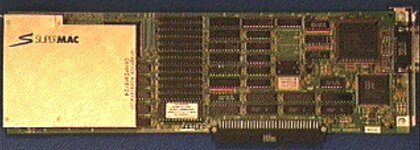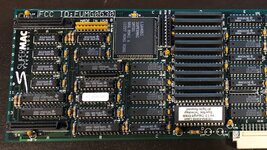I'm the author of the Q800 MacOS patchset for QEMU and came across this thread by accident when searching for something else - @Melkhior this is an amazing project, and I am pleasantly surprised that the Declaration ROM support was good enough to prototype the real one 
One of the main reasons for adding a proper Nubus implementation with Declaration ROM support was to allow for adding extra Nubus cards to QEMU, particularly a virtual VGA card with extended resolutions, and also a virtio-9pfs card to allow file-sharing with the host similar to BII/SheepShaver. Writing the virtual devices for QEMU is fairly easy for me, but alas I don't have much background in writing Classic MacOS drivers and Declaration ROMs (plus I have a day job!) which means it will take me some time to get around to this.
Would either yourself or anyone following the thread be interested to help with writing the MacOS drivers? I am happy to put together suitable virtual devices for QEMU if there is sufficient demand, plus provide advice and debugging tips from the QEMU perspective as needed.
One of the main reasons for adding a proper Nubus implementation with Declaration ROM support was to allow for adding extra Nubus cards to QEMU, particularly a virtual VGA card with extended resolutions, and also a virtio-9pfs card to allow file-sharing with the host similar to BII/SheepShaver. Writing the virtual devices for QEMU is fairly easy for me, but alas I don't have much background in writing Classic MacOS drivers and Declaration ROMs (plus I have a day job!) which means it will take me some time to get around to this.
Would either yourself or anyone following the thread be interested to help with writing the MacOS drivers? I am happy to put together suitable virtual devices for QEMU if there is sufficient demand, plus provide advice and debugging tips from the QEMU perspective as needed.


